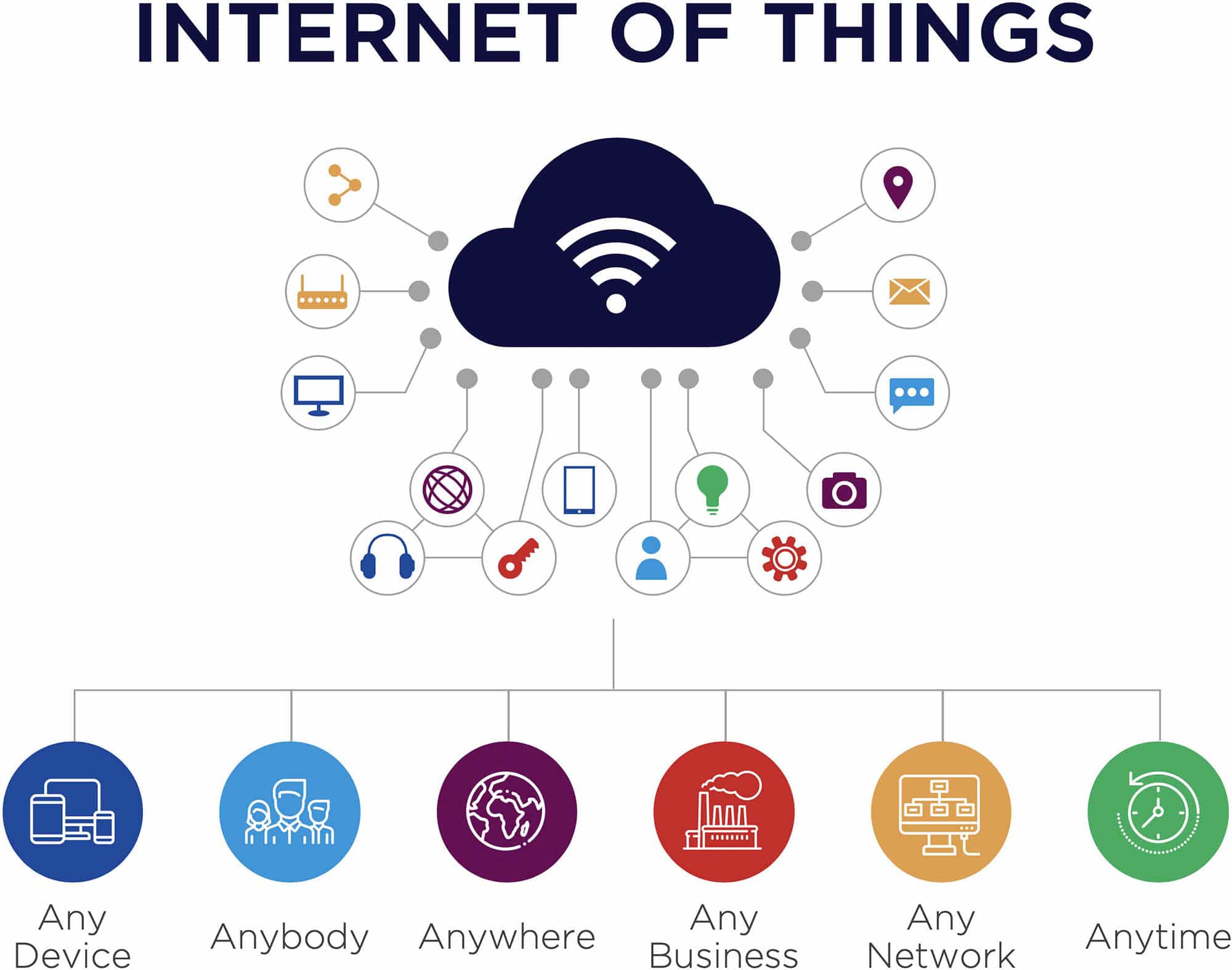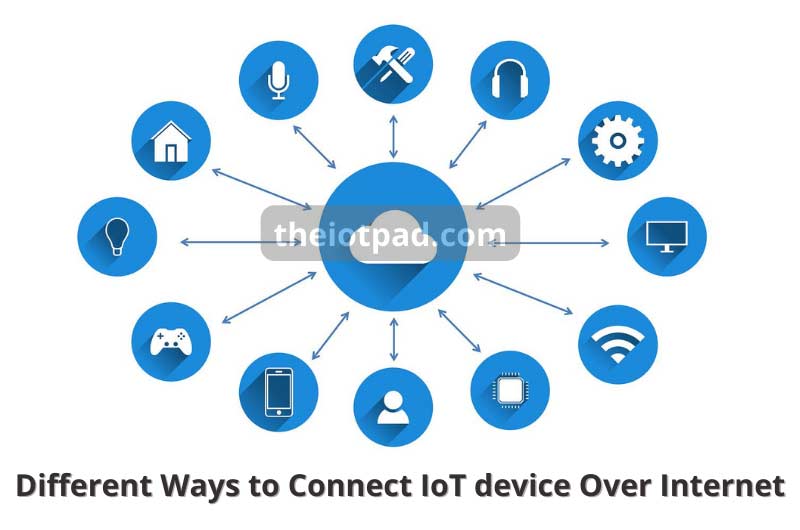Could you imagine remotely controlling your Internet of Things (IoT) devices, no matter where you are, all without spending a single penny? It's not just a possibility; it's a readily achievable reality, thanks to the power of secure remote access.
In today's interconnected world, the ability to manage and monitor your IoT devices from a distance is no longer a luxury; it's a necessity. Whether you're a seasoned IT professional, a tech enthusiast, or simply someone curious about the capabilities of their smart home, the ability to access your devices remotely offers a level of convenience and control that was once unimaginable. This guide will delve into the various methods available for setting up remote access to your IoT devices, focusing on the most cost-effective and secure approaches, including utilizing SSH on your Mac and exploring alternative solutions for both Windows and macOS users.
The beauty of remote access lies in its simplicity and versatility. At its core, it acts as a digital bridge, connecting you to your IoT devices regardless of physical location. This means you can troubleshoot issues, monitor performance, and even make adjustments to your devices from the comfort of your couch, the bustling environment of a coffee shop, or even while traveling across the globe. The benefits are vast, encompassing everything from improved efficiency and reduced downtime to enhanced security and greater peace of mind.
But the path to remote access isn't always straightforward. The world of IoT is a complex landscape, populated by a myriad of devices, operating systems, and network configurations. This can make the prospect of setting up remote access seem daunting. Furthermore, security concerns are paramount. The last thing you want is to expose your devices to unauthorized access. Fortunately, with the right tools and knowledge, you can establish secure and reliable remote connections without breaking the bank.
This guide will demystify the process, providing you with the knowledge and step-by-step instructions you need to unlock the full potential of your IoT devices. We'll explore the different methods available, from the tried-and-true approach of leveraging SSH on a Mac to the more modern solutions offered by tools like SocketXP. We'll also discuss the crucial aspects of security, ensuring that your remote connections are both efficient and protected. This will ensure your devices are not vulnerable to any unauthorized access.
Consider a scenario in the bustling heart of a logistics company. IoT devices, seamlessly integrated into the supply chain, constantly transmit vital data regarding the status of goods, the operational state of machinery, and the precise locations of assets. However, how would you, as a manager, ensure your team has a system in place that empowers them to monitor these IoT devices? How do they keep things running smoothly, even during a crucial meeting? Remote access provides a lifeline in such situations. It enables you to monitor performance and ensure that the network is working smoothly. In such cases, remote access to IoT devices becomes not just a convenience, but a critical tool for maintaining operational efficiency and for minimizing downtime.
| Category | Details |
|---|---|
| Core Concept | Remote access to IoT devices enables management and control from any location via the internet. |
| Key Benefits | Enhanced efficiency, reduced downtime, improved security, greater peace of mind, and convenience. |
| Methods Explored | SSH on Mac, SocketXP, VPNs, and alternative solutions for Windows and macOS. |
| Security Considerations | Prioritizing secure connections and preventing unauthorized access. |
| Applications | Supply chain management, remote troubleshooting, monitoring device performance, and controlling devices from a distance. |
| Tools & Technologies | SSH, SocketXP, VPNs, Reverse SSH Tunnels (for Linux-based devices), TightVNC, Ngrok, and localtunnel. |
| Cost | Focus on free or low-cost solutions to maximize value. |
| Operating Systems Covered | macOS, Windows, and Linux-based devices (e.g., Raspberry Pi). |
| Example Use Cases | Smart home control, remote server management, industrial automation, and supply chain monitoring. |
| Goal | To provide a practical guide for setting up secure and cost-effective remote access to IoT devices. |
| Reference Link | Example - Remote Access Technologies (Replace with an actual, relevant URL) |
The good news is that accessing your IoT devices remotely on a Mac without spending a dime is achievable. This comprehensive guide will walk you through the process of setting up remote access for IoT devices via SSH on a Mac for free, this is not the only way but it is one of the most secured and well known method, with SSH, you can maintain control over your devices while ensuring data security.
For those who prefer a more visual approach, tools like TightVNC offer a graphical interface for remote access. By installing a TightVNC server on your IoT device and the TightVNC client on your Windows or Mac laptop, you can establish a remote desktop connection. This allows you to interact with your device's interface as if you were physically present, making it ideal for managing devices with complex graphical user interfaces.
If you're working with a Linux-based device, such as a Raspberry Pi, setting up a reverse SSH tunnel is another powerful option. This method allows your device to initiate the connection to a server, making it easier to access even if it's behind a router. By establishing a secure tunnel, you can access your device remotely, as if it were on the same local network.
As the Internet of Things (IoT) continues to grow, more devices are being integrated into networks, requiring secure and reliable remote access solutions. The ability to connect and control these devices from a distance opens up a world of possibilities, from simple convenience to complex industrial applications. The flexibility and control you gain can significantly improve your workflow and productivity. The power is in your hands, all you need is the knowledge, which you will obtain by continuing to read this guide.
Let's explore some of the common methods for setting up remote access to IoT devices, with a focus on free or low-cost solutions:
- SSH (Secure Shell): This is a command-line tool that provides a secure way to access a remote device. It's a powerful and versatile option, especially for Linux-based devices.
- VPN (Virtual Private Network): A VPN creates a secure, encrypted connection between your device and the remote network. This allows you to access your IoT devices as if you were on the same local network.
- VNC (Virtual Network Computing): VNC allows you to remotely control a device's graphical interface. It's a good option if you need to see the device's screen and interact with it visually.
- SocketXP: SocketXP is designed to offer remote access to applications running on your devices, making it a good choice for accessing web applications.
- Ngrok/Localtunnel: These tools can be used to create temporary, secure tunnels to your local devices, allowing you to access them from the internet.
The beauty of these methods is that, with the right setup, you can access your devices from virtually anywhere. This is particularly useful for tasks like managing smart home devices, monitoring industrial equipment, or providing remote support for IoT installations.
Now that we have a basic understanding of the various approaches for setting up remote access, let's move on to the practical steps involved.
Setting up remote access for your IoT devices may vary depending on the specific device and manufacturer. However, here are some general steps to follow:
- Choose the right method: Decide which remote access method is best for your needs (e.g., SSH, VPN, VNC, SocketXP). Consider the operating system of your IoT device, the level of security required, and whether you need a graphical interface.
- Install necessary software: Install the required software on both your IoT device and the device you'll be using to access it remotely (e.g., SSH client, VPN client, VNC server and client).
- Configure your network: You may need to configure your router or firewall to allow traffic to your IoT device. This may involve setting up port forwarding or creating a DMZ.
- Set up security: Make sure to secure your remote access connection by using strong passwords, enabling encryption, and configuring firewalls.
- Test your connection: Once everything is set up, test your remote access connection to ensure it's working correctly.
When it comes to connecting to your IoT desktop remotely over the internet, there are several options. For this, you could use the SocketXP IoT remote access solution. Install SocketXP IoT remote access agent on your device and then use it to connect to your devices from anywhere. You can use SocketXP to remote access any web application over the internet.
For those who prefer the graphical interface, setting up a remote desktop connection without the internet is also possible. Through RDP (Remote Desktop Protocol), you can achieve this. However, keep in mind that RDP typically requires both devices to be on the same network or a VPN for secure connections over the internet.
If your IoT device is behind a firewall, you'll need to configure port forwarding on your router to allow incoming connections. This involves specifying the device's IP address and the port that the remote access service is using. For added security, consider using a VPN to encrypt your connection.
Let's dive in and unlock the full potential of secure remote access.
By leveraging SSH on a Mac, users can maintain control over their devices while ensuring data security. Learning how to remote connect IoT behind a firewall on Mac and Windows for free is a valuable skill that opens up endless possibilities for managing and monitoring your IoT devices. Remote access to IoT devices over the internet on your Mac is achievable for free. Using tools like ngrok and localtunnel, you can establish secure and efficient remote connections without spending a dime.
Remote access provides a bridge between you and your connected devices. It doesn't matter if you're in the next room or on the other side of the world, you can control and monitor your device as if you were physically present. Whether youre in a different country or on the go, you can control and monitor your device.
In more professional or industrial settings where IoT devices may be handling sensitive data or where direct remote access to devices is required, the use of VPNs can be more common. IT professionals might use a VPN to access an IoT device on a remote network securely or to ensure secure communication between devices on different networks.
The benefits of remote access to IoT devices are vast and varied. The ability to control and monitor your devices from anywhere in the world offers unparalleled convenience and flexibility. Remote access to IoT devices provides a significant advantage to various industries, including logistics, by allowing remote monitoring and control of devices and equipment in real time. This ensures efficiency, reduces downtime, and provides actionable insights. It is also useful to monitor supply chains, enabling efficient resource allocation and minimizing any potential issues.
By leveraging tools like SSH and VPNs, you can ensure secure and reliable remote access to your IoT devices. This is especially important when dealing with sensitive data or devices that are critical to your operations. Remember, the key to successful remote access lies in choosing the right methods, configuring your network properly, and prioritizing security. With the information provided in this guide, you're well on your way to unlocking the full potential of your connected devices. Through remote desktop connections without internet, remote access becomes a reality, offering a practical solution to maintain control over your devices.
With these tools and a little know-how, you can manage and monitor your IoT devices from anywhere in the world, opening up a world of possibilities for control and convenience.


